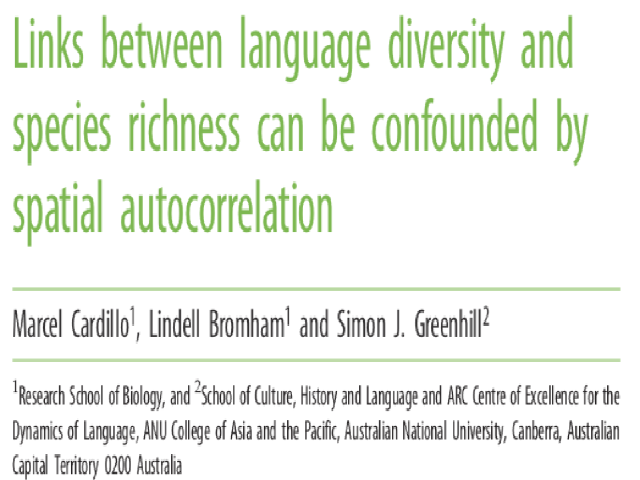Links between language diversity and species richness can be confounded by spatial autocorrelation

Authors:
Citation:
Details:
Published: 3 March, 2015.
Download:
Abstract:
Turvey & Pettorelli [1] present a fascinating study exploring links between biological and linguistic diversity across New Guinea. With the world’s highest linguistic diversity (around 900 languages, an average of one language per 1000 km2 [2]), as well as the high biodiversity characteristic of a large mountainous tropical island, New Guinea is an ideal test case for investigating patterns and drivers of biocultural diversity. Turvey & Pettorelli’s finding that numbers of languages and mammal species are correlated across grid cells in New Guinea is consistent with studies in other parts of the world showing similar relationships (e.g. [3]). Globally, languages, like species, show a latitudinal diversity gradient [4], and areas of high language diversity often coincide with hotspots of species diversity [5]. In addition, Turvey & Pettorelli report a surprising negative correlation between the numbers of threatened mammal species and languages considered at risk of extinction. This finding contrasts with previous studies showing that extinction risk in languages and species are positively correlated [5,6].
Related links / Media:
Nothing found.